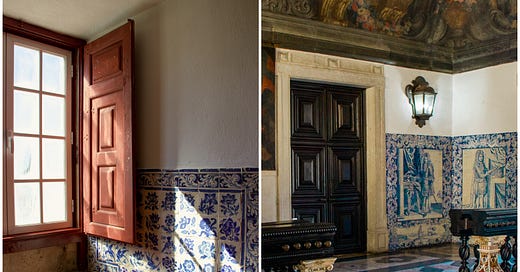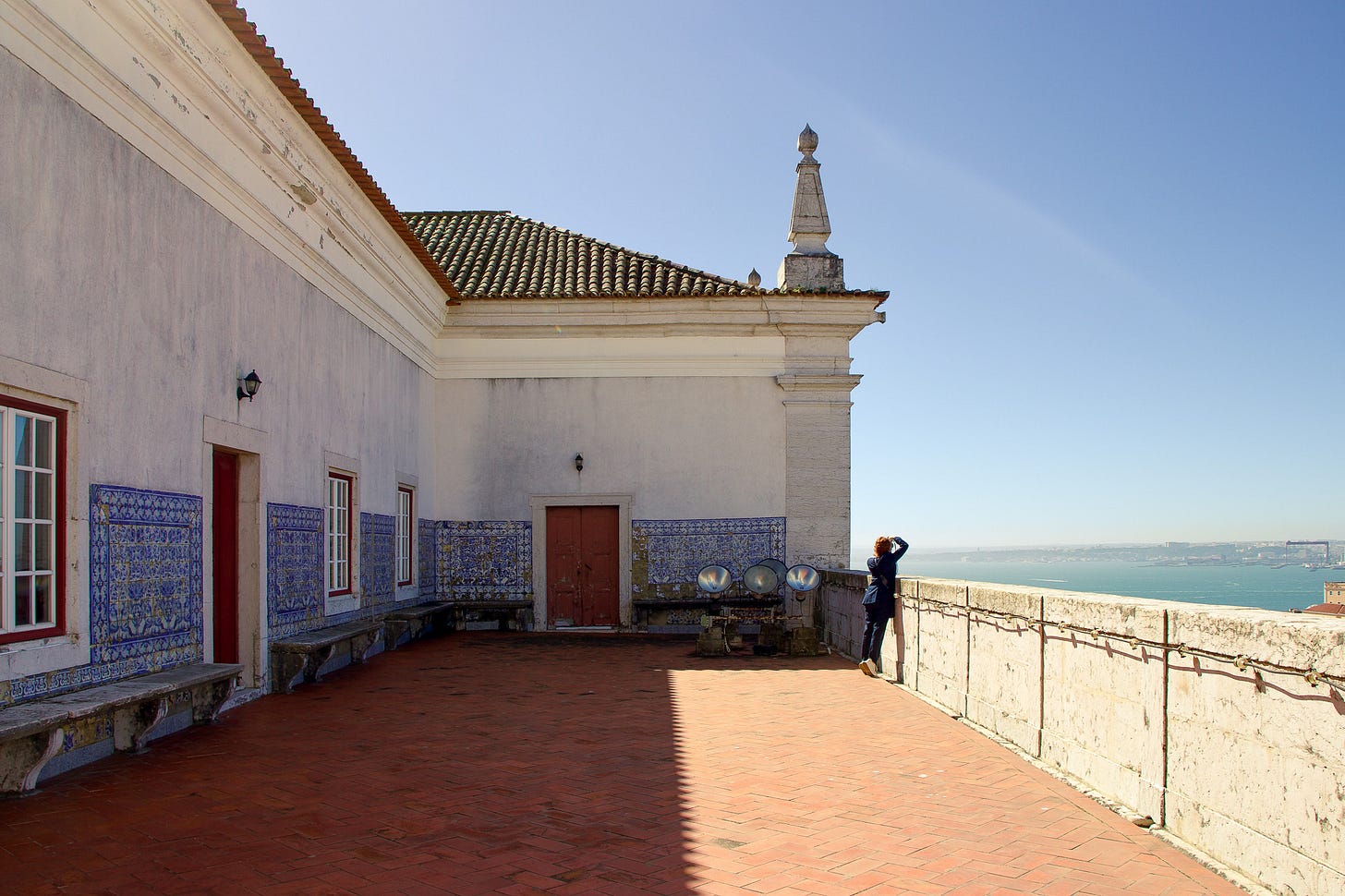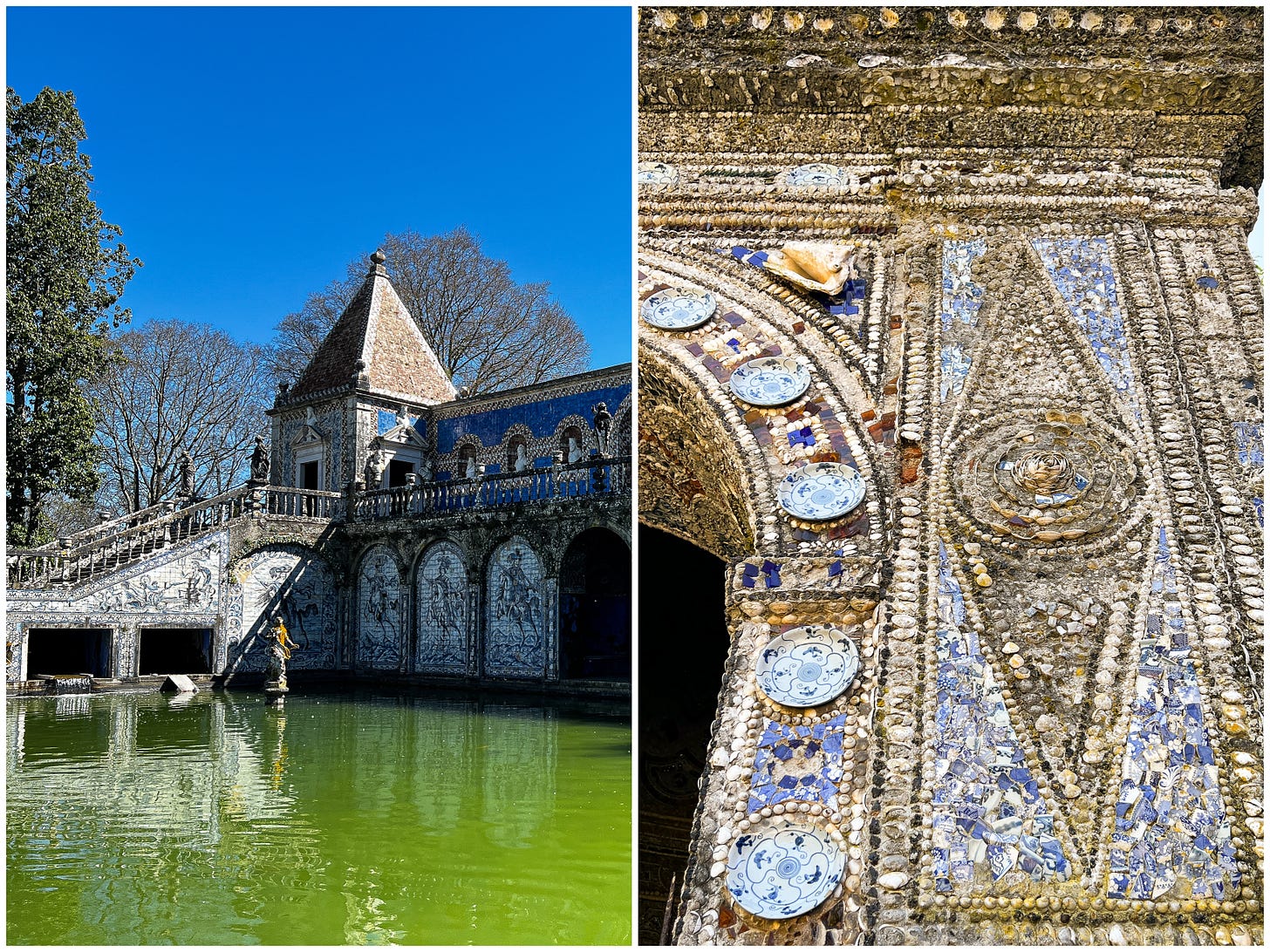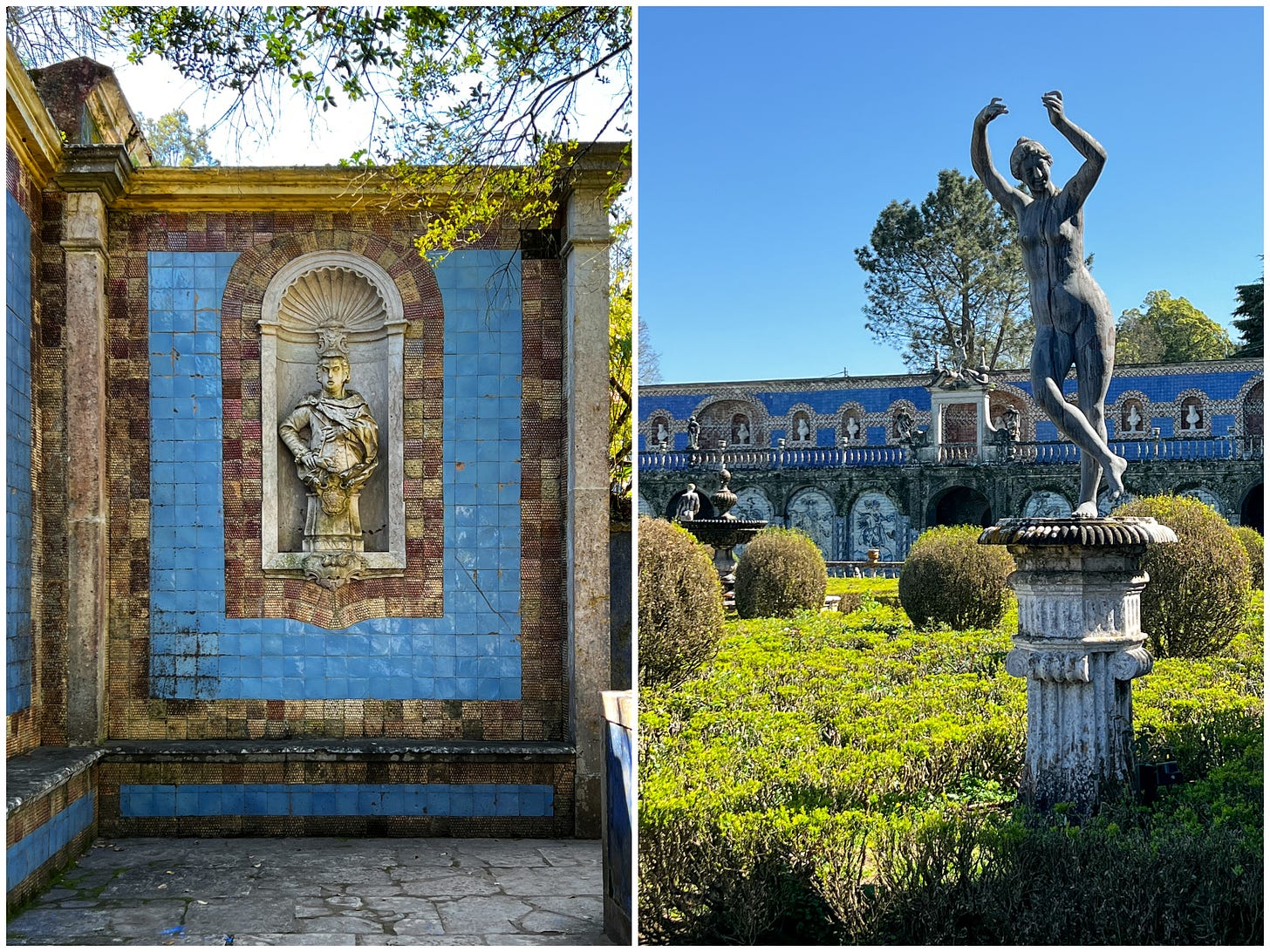Updated Guide to Tile-Gawking in Lisbon
Fantastical gardens and grottos with mythological sea creatures, in-situ scenes at preserved monasteries, and a wildly eccentric house-turned-ceramics-museum
Walk down most any street in Lisbon and you’ll see walls glimmering with azulejos—the traditional, iconic Portuguese tiles that make this city so special. Originally used to protect buildings from heat and salty sea air, these ceramic facades diffuse the suns rays and cast a flattering glow—one of the reasons that Lisbon is known as the City of Light. After several azulejo deep-dives in Lisbon, we tell you where to see the most inspired displays of this centuries-old decorative tradition. Our just-updated guide is full of our very favorite places, from over-the-top gardens, quiet monasteries, hotel hallways, shops and one enchanted, out-of-the-way courtyard where you’ll be the only tile scout in sight.
JARDIM FRONTEIRA: Best fantastical old-world gardens dripping with mythological azulejos
If you only have time for one tile-specific stop, let it be Jardim Fronteira, a 17th-century hunting lodge turned poetic dreamland. If you have even a passing interest in decadent gardens and grandiose palaces covered with fantastical scenes and unusual tiles, THIS IS THE PLACE.
Bordering Monsanto Park and only a short taxi ride from the city center, the 12-acre estate has a magnificent tiled folly set in a boxwood garden studded with fountains, statues, and a pool with two resident black swans. Climb the stairs to the Terrace of Kings lined with busts of former monarchs. Then wander over to the stone pavilion dedicated to the sea deities and encrusted with shells and glazed china plates (reportedly from a banquet so unforgettable the host memorialized them for posterity.)
On every wall, azulejo tiles tell stories of knights errant, mythological creatures, and mischievous animals. The descendants of the original Marquis da Fronteira still live on the lower floor of the house, 13th-generation caretakers of this elegant lost paradise. The dining room, titled the Hall of Battles, is considered the Sistine Chapel of tilework.
Keep reading with a 7-day free trial
Subscribe to In Hand to keep reading this post and get 7 days of free access to the full post archives.






